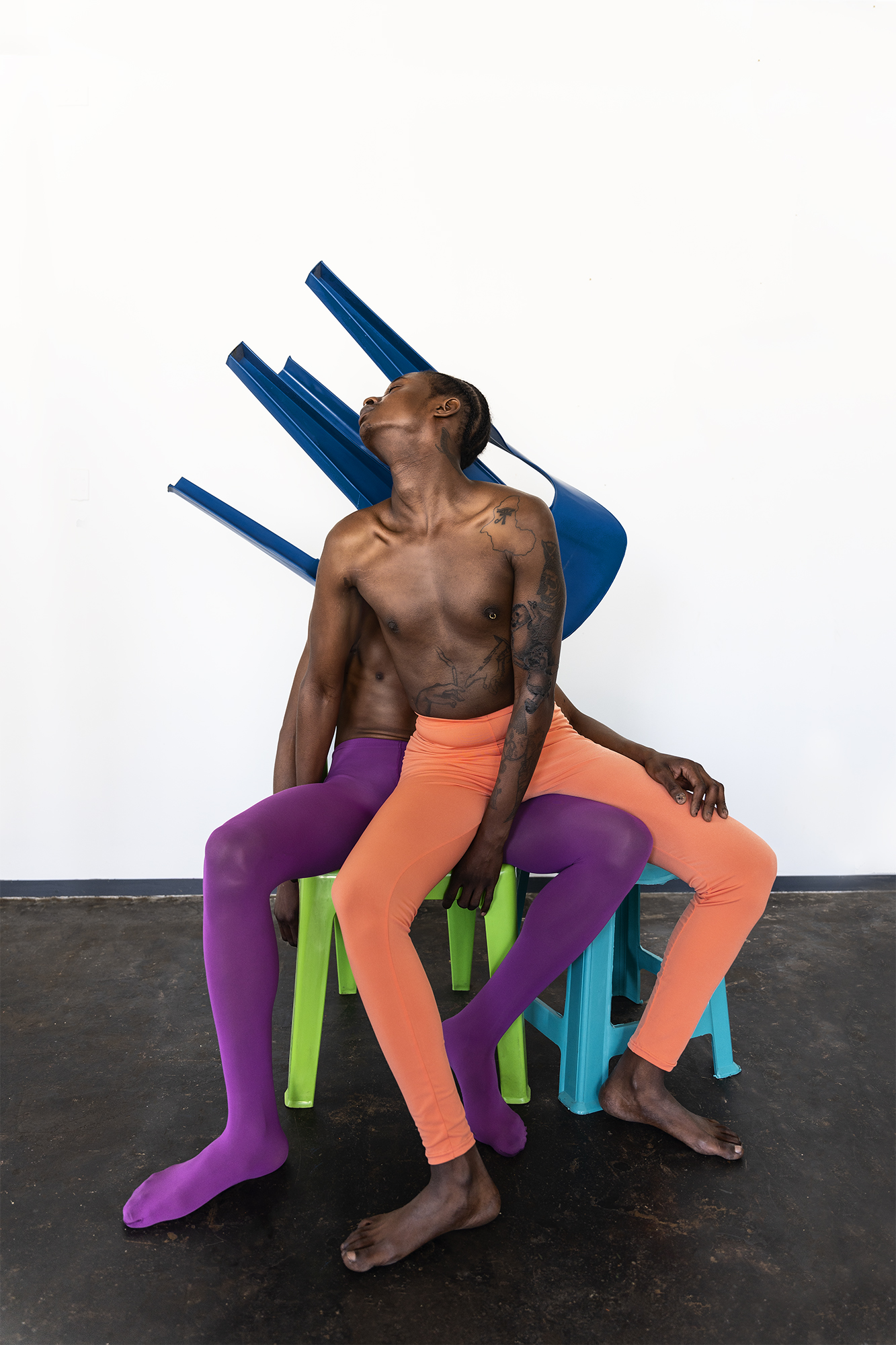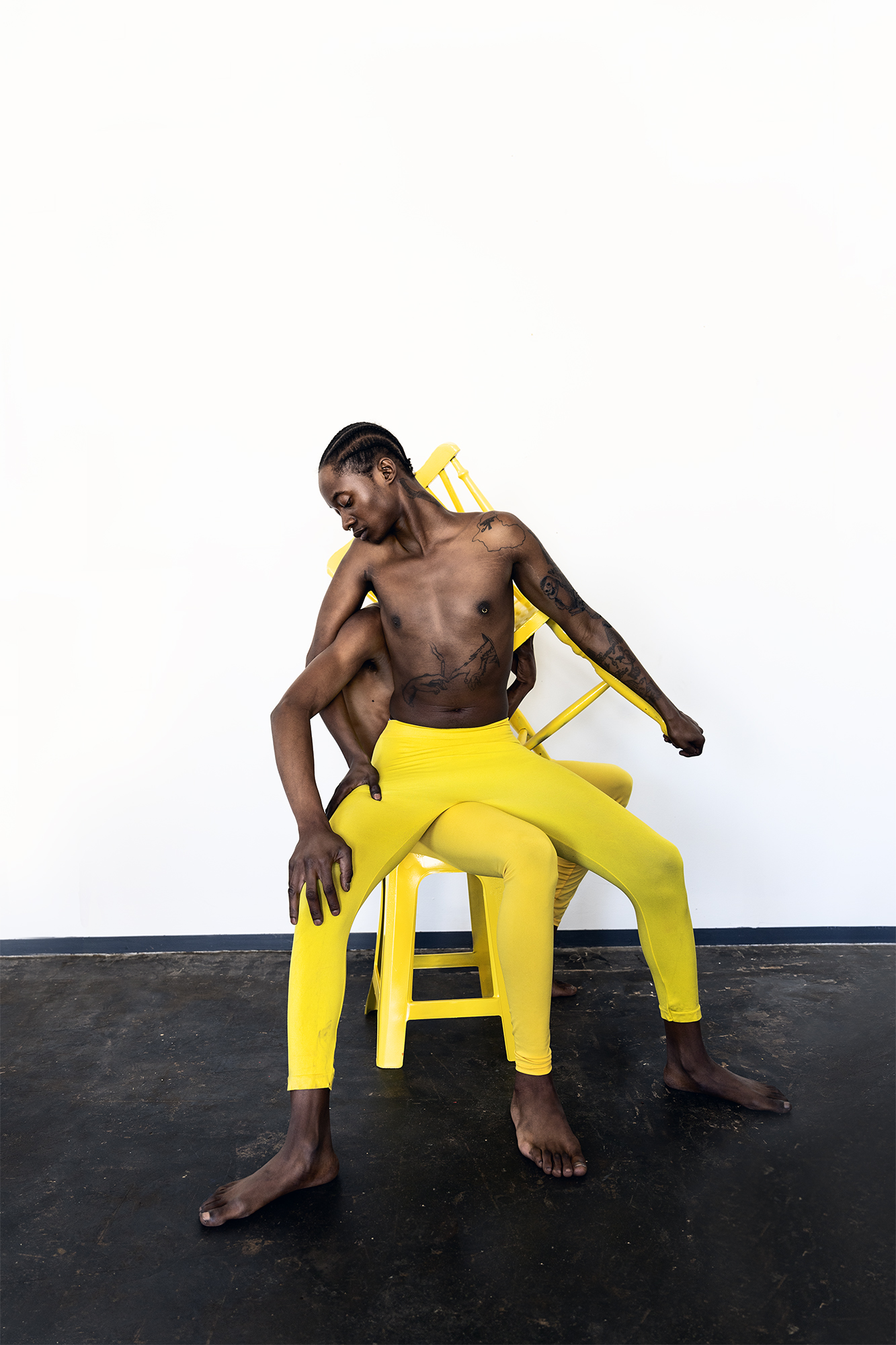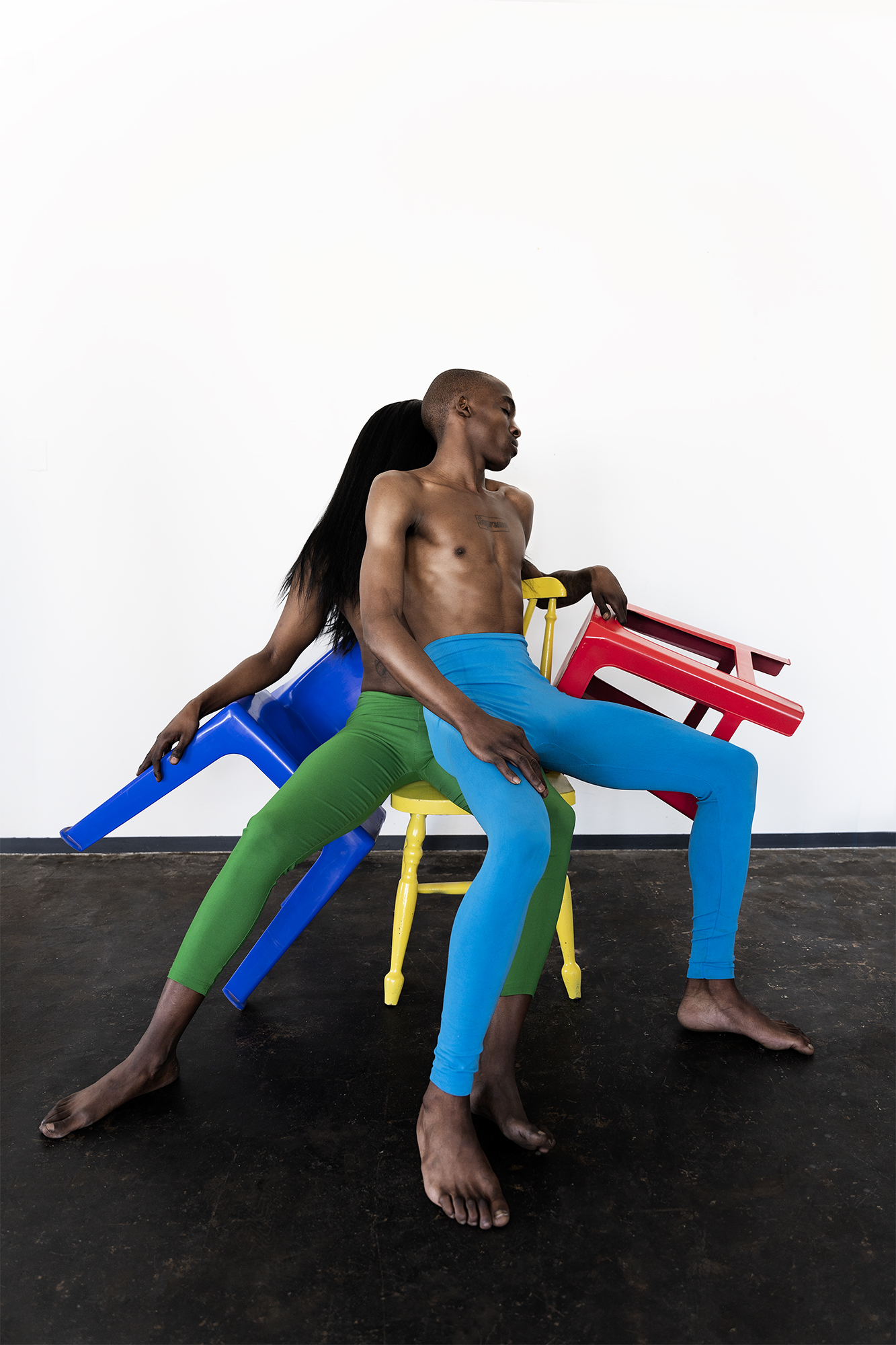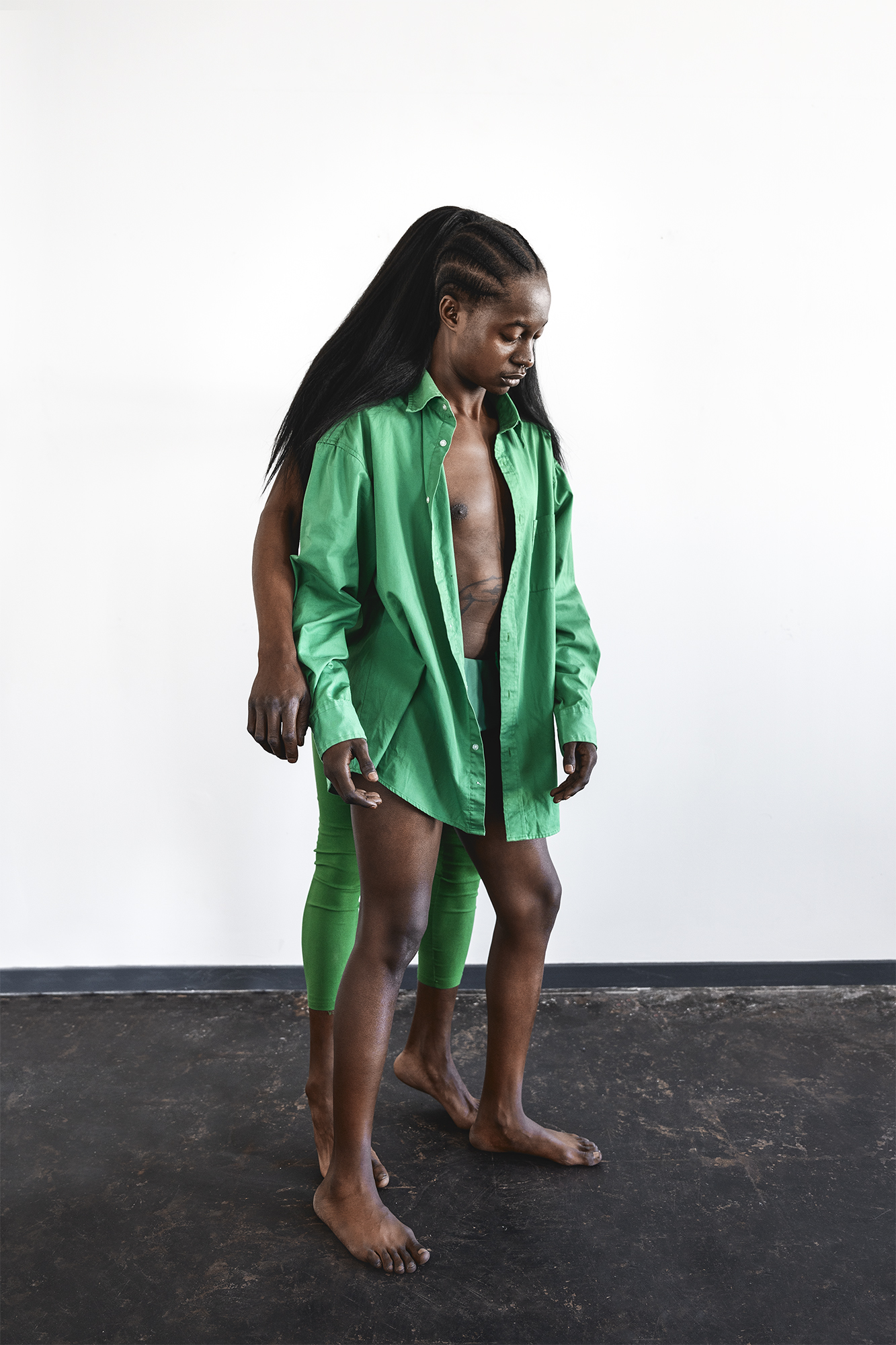Jamal Nxedlana‘s creative endeavours have never shied away from the experimental; pushing the parameters around creative expression and the processes that drive them. He has created a unique footprint in the South African cultural landscape through his work as a designer, the Creative Director of Bubblegum Club, a member of CUSS Group and his involvement in various other cultural projects. The development of his photographic practice has followed a similar trajectory, constructing a distinctive visual language that invites audiences to journey through alternative ways of viewing. The work presented in the virtual exhibition Dangerous Bodies with Sulger-Buel Gallery attests to this.

In the exhibition we see an intimacy and vulnerability about Jamal’s personal experiences as a black man within a post-Apartheid South Africa where the black body is still read as a threat. The show title is inspired by George Yancy’s book Black Bodies, White Gazes: The Continuing Significance of Race, and Jamal’s own experiential affinity while reading the book. A criticality around blackness, Africanness and the performance of identity is built through his practice—with his photography grounded in an engagement with Afrosurrealism. This conceptual lens allows for the unconscious and the symbolic to be present in visual articulations on the intertwined nature of identity, race, popular culture and mass production. Form, movement, shadows and stillness are significant elements in his expression of what it is like to live in a black body and to think through the surreal scars which structural racism presses upon the black body. Reflecting on this Jamal expresses that,
In my most recent series, Third Body, which is a part of ‘Dangerous Bodies’ and most probably my last body [of] work to carry a title, I am thinking more about the postcolonial condition by subverting the idea that the African continent is a dumping ground for cheap consumer products. In the work I reconfigure cheap, mass-produced materials and objects like mono block chairs and use them to manufacture new forms and ultimately new and valuable products. I treat these materials as raw materials, and like raw materials are extracted in Africa and processed abroad—I take these raw materials and process them in my work.

Tied to this is the relationships he establishes between colours in the background of his images, the clothing the models wear and the stools they sit on. Here, colour moves beyond holding an aesthetic value, and becomes the beholder of strategic artistic propositions and declarations. “Colour has been a tool for me, even a weapon. Something I use to demand attention to the work and its subject matter. It’s also part of my language, like how far can I stretch the use of and the meaning of colour in my work” With a practice based on production and an ongoing development of language and making products, the camera becomes as a tool.
I construct my images like a scene and I use the camera like a pencil or a paintbrush, as a tool to depict the scene. I feel like with drawing or painting there is a lot more subjectivity… So I try and bring that back into the work through the construction of the image; everything from the actors to their wardrobe, the props and the ways that they interact with [each other].
Visit Dangerous Bodies online to experience the personal reflected in the photographic and the transitional moment in Jamal’s practice. The show is on view until 1 October 2020.






















































